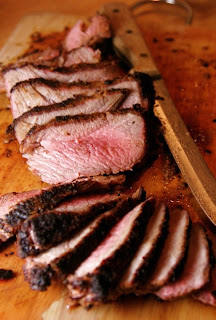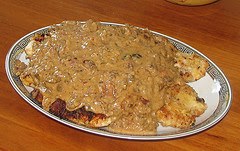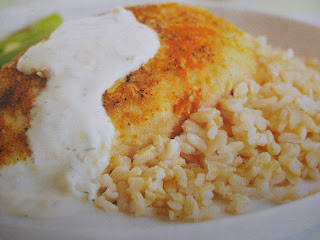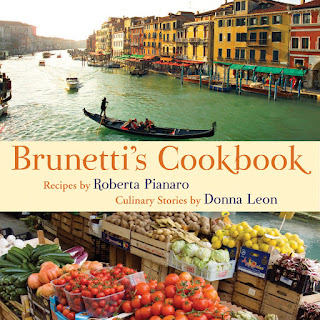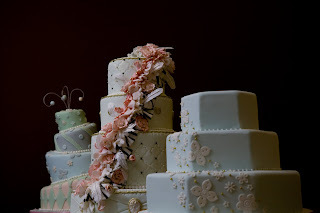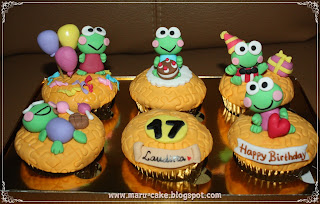
Wednesday, November 30, 2011
The Tapping Keys on the Smith-Corona
When I was growing up I was fascinated with American History. I saw the Boston Monument, the Mayflower II, The Henry Ford Museum and Greenfield Village. I was immersed in Americana. In high school, I became fascinated with the Kennedy family as my love for American history continued. In university, I minored in History, taking several American History courses.
Then it was time to apply to Teachers' College: I listed French, my major, as my first teachable, and History, my minor, as my second teachable. I had more than enough History credits, but I had no Canadian History credit, and therefore, I could not make it a teachable. Fortunately, I had enough English credits to make it my teachable. However, as an afterthought, I decided to take an introductory course to Canadian History. My professor was an excellent story teller and from that moment on I was hooked. I realized that Canadians are just as interesting as Americans. Yes, our history is shorter than that of our neighbours. But we do have a history; it just needs to be told.
Enter Pierre Berton. According to his publicist Elsa Franklin, "Pierre was a human dynamo in his effort to tell the stories of Canada, converting the power of his Smith-Corona [typewriter] into a highly successful popularization of Canadian history." (Toronto Star, December 8, 2004.)
I remember seeing many of Mr. Berton's books on my Grandad's bookshelf when I used to visit him. The Last Spike, describing the building of the world's longest railroad at the time, the CPR, was one of my Grandad's favourite titles (see my blog post dated August 27). Flames Across the Border talks about the War of 1812, told from the point of view of the soldiers, with a captivating naval battle on Lake Erie. I particularly liked reading The Dionne Years: A Thirties Melodrama about the Dionne Quintuplets and their childhood years where they were put "on display" for long line ups of Canadian tourists each day. The Great Depression covered the Dirty Thirties and how 1.5 million Canadians were on relief and 70,000 hoboes rode the rails. My Dad particularly liked The Arctic Grail about the scores of explorers who searched for the Northwest Passage, a link between the Atlantic and the Pacific. Sir John Franklin, the most recognized of these exploreres, disappeared in his quest. We hear about the stories of crews succumbing to scurvy and the elements. Lady Franklin later paid for an expedition led by Sir John Ross to find her missing husband. Pierre's work Niagara is a superbly written tale about Niagara Falls, mixing history, geography, science, art and politics. Mr. Berton even penned a book called The Joy of Writing with practical, inspirational tips for budding writers.
Thank you to the McMaster University professor that lit a spark in me. If every teacher could bring Canadian history to life the way author Pierre Berton has, it would be the most popular subject on the curriculum. Although the keys on Mr. Berton's Smith-Corona stopped tapping on November 30, 2004, his stories will endure for generations to come.
Photo courtesy www.antiquetypewriter.org.
Then it was time to apply to Teachers' College: I listed French, my major, as my first teachable, and History, my minor, as my second teachable. I had more than enough History credits, but I had no Canadian History credit, and therefore, I could not make it a teachable. Fortunately, I had enough English credits to make it my teachable. However, as an afterthought, I decided to take an introductory course to Canadian History. My professor was an excellent story teller and from that moment on I was hooked. I realized that Canadians are just as interesting as Americans. Yes, our history is shorter than that of our neighbours. But we do have a history; it just needs to be told.
Enter Pierre Berton. According to his publicist Elsa Franklin, "Pierre was a human dynamo in his effort to tell the stories of Canada, converting the power of his Smith-Corona [typewriter] into a highly successful popularization of Canadian history." (Toronto Star, December 8, 2004.)
I remember seeing many of Mr. Berton's books on my Grandad's bookshelf when I used to visit him. The Last Spike, describing the building of the world's longest railroad at the time, the CPR, was one of my Grandad's favourite titles (see my blog post dated August 27). Flames Across the Border talks about the War of 1812, told from the point of view of the soldiers, with a captivating naval battle on Lake Erie. I particularly liked reading The Dionne Years: A Thirties Melodrama about the Dionne Quintuplets and their childhood years where they were put "on display" for long line ups of Canadian tourists each day. The Great Depression covered the Dirty Thirties and how 1.5 million Canadians were on relief and 70,000 hoboes rode the rails. My Dad particularly liked The Arctic Grail about the scores of explorers who searched for the Northwest Passage, a link between the Atlantic and the Pacific. Sir John Franklin, the most recognized of these exploreres, disappeared in his quest. We hear about the stories of crews succumbing to scurvy and the elements. Lady Franklin later paid for an expedition led by Sir John Ross to find her missing husband. Pierre's work Niagara is a superbly written tale about Niagara Falls, mixing history, geography, science, art and politics. Mr. Berton even penned a book called The Joy of Writing with practical, inspirational tips for budding writers.
Thank you to the McMaster University professor that lit a spark in me. If every teacher could bring Canadian history to life the way author Pierre Berton has, it would be the most popular subject on the curriculum. Although the keys on Mr. Berton's Smith-Corona stopped tapping on November 30, 2004, his stories will endure for generations to come.
Photo courtesy www.antiquetypewriter.org.
Tuesday, November 29, 2011
Laughter is the Best Medicine
My daughter Jacqueline reminded me yesterday that laughter is the best medicine. She said that if you laugh so hard that you cry, you likely won't get a cold for the next 45 hours. My husband Rob watched some SCTV clips the other night and he had a great sleep, rather than his usual restless one. Here are some facts about laughter and its benefits:
Laughter relaxes the whole body. A good, hearty laugh relieves physical tension and stress, leaving your muscles relaxed for up to 45 minutes after.
Laughter boosts the immune system. Laughter decreases stress hormones and increases immune cells and infection-fighting antibodies, thus improving your resistance to disease.
Laughter triggers the release of endorphins, the body’s natural feel-good chemicals. Endorphins promote an overall sense of well-being and can even temporarily relieve pain.
Laughter protects the heart. Laughter improves the function of blood vessels and increases blood flow, which can help protect you against a heart attack and other cardiovascular problems.
(www.helpguide.org)
In 1965, a Saturday Review writer named Norman Cousins was diagnosed with a debilitating spinal disease called ankylosing spndylistis. His doctor gave him only a few months to live. Rather than giving up, Mr. Cousins began a daily ritual of taking high doses of Vitamin C and watching comedy films. He discovered that watching just 10 minutes of comedy would give him up to 2 hours of pain free sleep each night. Not only did he find comfort in laughter, but he was able to regain the use of his limbs and eventually return to work. He penned a book about his experienced called An Anatomy of an Illness. Norman Cousins lived to a ripe old age, passing away in 1990.
Children apparently laugh hundreds of times in the course of a day, but many adults barely crack a smile from dawn to dusk. Here are some tips to help us see the lighter side of life:
1. Smile!
2. Spend time with happy people.
3. Tell funny stories to lighten the mood.
4. Introduce humour into the conversation when appropriate.
5. Share inside jokes with friends.
6. Seek out entertainment with humour.
7. Laugh at your own expense.
8. Be playful and silly.
9. Play board games with family or friends.
10. Spend time with children.
(www.thehappyself.com)
E.E. Cummings says that "The most wasted of all days is the one without laughter." So when your feet hit the floor tomorrow morning as you climb out of bed, put a smile on your face, think of a good joke and enjoy a hearty belly laugh. It's infectious. Before you know it, your entire family will be laughing right along with you.
(www.helpguide.org)
In 1965, a Saturday Review writer named Norman Cousins was diagnosed with a debilitating spinal disease called ankylosing spndylistis. His doctor gave him only a few months to live. Rather than giving up, Mr. Cousins began a daily ritual of taking high doses of Vitamin C and watching comedy films. He discovered that watching just 10 minutes of comedy would give him up to 2 hours of pain free sleep each night. Not only did he find comfort in laughter, but he was able to regain the use of his limbs and eventually return to work. He penned a book about his experienced called An Anatomy of an Illness. Norman Cousins lived to a ripe old age, passing away in 1990.
Children apparently laugh hundreds of times in the course of a day, but many adults barely crack a smile from dawn to dusk. Here are some tips to help us see the lighter side of life:
1. Smile!
2. Spend time with happy people.
3. Tell funny stories to lighten the mood.
4. Introduce humour into the conversation when appropriate.
5. Share inside jokes with friends.
6. Seek out entertainment with humour.
7. Laugh at your own expense.
8. Be playful and silly.
9. Play board games with family or friends.
10. Spend time with children.
(www.thehappyself.com)
E.E. Cummings says that "The most wasted of all days is the one without laughter." So when your feet hit the floor tomorrow morning as you climb out of bed, put a smile on your face, think of a good joke and enjoy a hearty belly laugh. It's infectious. Before you know it, your entire family will be laughing right along with you.
ironhead changes
Monday, November 28, 2011
Peanut Butter
Enjoyed by the Incas in South America centuries ago, peanut butter is a staple in the North American diet today. In 1884, Marcellus Gilmore Edson of Montreal was given a patent for the process of milling roasted peanuts. American George Washington Carver, however, is usually credited with inventing the peanut butter that we eat today. Dr. Straub of Missouri invented a peanut butter making machine to give the protein rich product to his elderly, toothless patients who could not chew nuts. Today peanut butter is enjoyed by both young and old alike (although sadly many children seem to have peanut allergies in recent years).
Skippy Peanut Butter first appeared on American grocery store shelves in 1933. Today the company sells 90 million jars each year. Kraft Peanut Butter first arrived in supermarkets in 1960. Today they are advertising a campaign called "Spread the Feeling", encouraging Canadians to each donate a jar of peanut butter to their local food bank. Their goal is to reach 75,000 jars by Christmas; last year, donations totalled 60,000. With Canada's population sitting at 33 million, it should not be that hard to reach their goal.
November is National Peanut Butter Lovers' Month and to celebrate the occasion, I am posting a peanut butter recipe. Enjoy!
Photo courtesy http://store.superdeliveryguys.com.
Skippy Peanut Butter first appeared on American grocery store shelves in 1933. Today the company sells 90 million jars each year. Kraft Peanut Butter first arrived in supermarkets in 1960. Today they are advertising a campaign called "Spread the Feeling", encouraging Canadians to each donate a jar of peanut butter to their local food bank. Their goal is to reach 75,000 jars by Christmas; last year, donations totalled 60,000. With Canada's population sitting at 33 million, it should not be that hard to reach their goal.
November is National Peanut Butter Lovers' Month and to celebrate the occasion, I am posting a peanut butter recipe. Enjoy!
CHOCOLATE PEANUT BUTTER PUDDING CAKE
(Curious: The Tourist Guide)
¾ cup flour
1/3 cup sugar
1 tsp. baking powder
1/3 cup milk
1 egg, beaten
3 tbsp peanut butter
¾ cup packed brown sugar
¼ cup cocoa powder
1 cup boiling water
In a large bowl, whisk together flour, sugar and baking powder. In a separate bowl, whisk together milk, egg and peanut butter; stir into flour mixture. Turn into greased 8: square glass baking dish. In heatproof bowl, whisk brown sugar with cocoa powder; whisk in boiling water until smooth. Pour over cake; do not stir. Bake in 350 F oven until cake is firm to the touch, about 30 minutes. Let cool for 10 minutes.
Photo courtesy http://store.superdeliveryguys.com.
Sunday, November 27, 2011
Just Like New
As a child, I can remember my Mom wrapping a canned good in white tissue paper and tying the ends with red or green ribbon, making it look like a large "bonbon". We would take the gift to church for White Gift Sunday, during the season of Advent. Recently, I read a picture book about the same topic called Just Like New by Ainslie Manson. Opening its pages, the reader observes illustrator Karen Reczuch's beautiful watercolours which tell the Canadian part of the story.
Sister and brother Sally and Mike live in Montreal and attend church where they are asked to bring a present for White Gift Sunday to donate to a child in war-torn England. The catch? The donated present has to be "just like new". Mike immediately picks a book that he is not interested in. However, Sally grapples with the decision: should she wrap up one of two worn out dolls or should she send her doll that is in near mint condition? In the end, Sally chooses the latter, labelling the doll with its name for the new owner. Overseas in England, where the scenes are illustrated in black and white, the little girl who receives the parcel is thrilled. The English girl becomes pen pals with the Canadian one.
Ainslie Manson brings World War II home to Canada in an informative way, getting to the heart of her readers through a doll. She shows how a small child can make a big difference in the life of another child just by one selfless act. I love Canadian historical picture books, especially those that tackle serious issues, but in a safe setting. If you are interested in this type of book, go to the library and look for the picture books that have a red Maple Leaf on the spine. Some will of course be fiction books, but others will be non-fiction. It's a great way to bring history to life for young children. And hopefully the book will be the spark to incite a lifelong passion for history in your child. Or maybe your child will pick out something "just like new" to donate to a needy child this Christmas.
Photo courtesy http://covers.openlibrary.com.
Sister and brother Sally and Mike live in Montreal and attend church where they are asked to bring a present for White Gift Sunday to donate to a child in war-torn England. The catch? The donated present has to be "just like new". Mike immediately picks a book that he is not interested in. However, Sally grapples with the decision: should she wrap up one of two worn out dolls or should she send her doll that is in near mint condition? In the end, Sally chooses the latter, labelling the doll with its name for the new owner. Overseas in England, where the scenes are illustrated in black and white, the little girl who receives the parcel is thrilled. The English girl becomes pen pals with the Canadian one.
Ainslie Manson brings World War II home to Canada in an informative way, getting to the heart of her readers through a doll. She shows how a small child can make a big difference in the life of another child just by one selfless act. I love Canadian historical picture books, especially those that tackle serious issues, but in a safe setting. If you are interested in this type of book, go to the library and look for the picture books that have a red Maple Leaf on the spine. Some will of course be fiction books, but others will be non-fiction. It's a great way to bring history to life for young children. And hopefully the book will be the spark to incite a lifelong passion for history in your child. Or maybe your child will pick out something "just like new" to donate to a needy child this Christmas.
Photo courtesy http://covers.openlibrary.com.
Saturday, November 26, 2011
Santa Claus is Coming to Town
The stars were out, the weather was mild, and the Christmas lights sparkled as we walked past the old Victorian homes up Park Avenue. Arriving at Victoria Park, we joined our friends who had already saved us a curbside spot and we unpacked our lawn chairs. We had a perfect view of an old red brick church with a turret, now converted into apartments. Although the parade started late, no one seemed to mind as we simply enjoyed each others' company. The kids kept inching out into the street to see if the first float was coming. Eventually, we saw the lights of the first vehicle slowly approach us. One by one the floats went by, the passengers holding their signs, waving their hands and tooting their horns. "MERRY CHRISTMAS!" read many of the signs, rather than the politically correct, "Happy Holidays". One even said "KEEP CHRIST IN CHRISTMAS!" followed by a donkey and Mary and Joseph. It was heartwarming to see that Brantfordites have not forgotten the true meaning of Christmas. Towards the end of the parade, we waved at our son Thomas who danced his way down the street beside a white limou full of members of his youth group from New City Church. Finally, we heard "Ho! Ho! Ho!" The kids looked wide-eyed as Santa waved from his high perch. With the parade coming to a close, we packed up our chairs, the kids packed up their candy, and we walked with our friends back down Park Avenue to Victoria. Everyone was in good humour. My husband Rob commented on the evening: "Brantford has 'salt of the earth' people." I agree. Thank you, Brantford, for a great parade!
Photo courtesy http://newimg.bbc.co.uk.
Photo courtesy http://newimg.bbc.co.uk.
Friday, November 25, 2011
I'm Published!
I received a cheque in the mail today from the Christian Courier for my poem "The Magic of a Father and a Daughter": I can officially say "I'm published!"
Eventhough I've been writing steadily for about five years, I've never considered myself a published author. I wrote an article for the Brantford Expositor back in 1998 about adoption. I wrote a poem about adoption called "Did I Ever Thank You?" published in a vanity poetry anthology in 2001. I've taken writing courses online at Mohawk College in recent summers. I've participated in NaNoWrimo (National Novel Writing Month) for the past three years where I (along with my writers' club friends)wrote a novel of 50,000 words in the space of a month. And this year when I attended the Christian Writers' Conference in Guelph, they asked me if I was published or not and I said "No". They hold a writing contest for attendees each year and the top three winners have either all or some of their registration fee paid. I was intending on entering the contest, but I can't. If you've been paid for your writing, you're considered published and therefore ineligible. What a great problem to have!
While I haven't had the ever elusive book published, I'm still working on that project. Nonetheless, it is encouraging to be recognized for my work. While I may not win a Pulitzer Prize, I will keep tapping away at the computer keys as I edit my book, add posts to my blog and write newspaper articles and poetry. Thank you, Christian Courier and Maranatha News, for giving me the opportunity to showcase my writing!
Photo courtesy http://i.istocking.com.
Eventhough I've been writing steadily for about five years, I've never considered myself a published author. I wrote an article for the Brantford Expositor back in 1998 about adoption. I wrote a poem about adoption called "Did I Ever Thank You?" published in a vanity poetry anthology in 2001. I've taken writing courses online at Mohawk College in recent summers. I've participated in NaNoWrimo (National Novel Writing Month) for the past three years where I (along with my writers' club friends)wrote a novel of 50,000 words in the space of a month. And this year when I attended the Christian Writers' Conference in Guelph, they asked me if I was published or not and I said "No". They hold a writing contest for attendees each year and the top three winners have either all or some of their registration fee paid. I was intending on entering the contest, but I can't. If you've been paid for your writing, you're considered published and therefore ineligible. What a great problem to have!
While I haven't had the ever elusive book published, I'm still working on that project. Nonetheless, it is encouraging to be recognized for my work. While I may not win a Pulitzer Prize, I will keep tapping away at the computer keys as I edit my book, add posts to my blog and write newspaper articles and poetry. Thank you, Christian Courier and Maranatha News, for giving me the opportunity to showcase my writing!
Photo courtesy http://i.istocking.com.
Thursday, November 24, 2011
Macy's Thanksgiving Day Parade
It covers 43 city blocks, its spectators number 3 million; it features 800 clowns, 40 balloons, 25 floats, and 10 marching bands. The Macy's Thanksgiving Day Parade was originally called the Macy's Christmas Parade: it starts with a large turkey and ends with the arrival of Santa's sleigh. It's a hard concept for Canadians to understand, given that the temperature is still well above zero here when we celebrate Thanksgiving. The parade starts at 77th street, winds its way past Central Park, past Radio City Music Hall, past Rockefeller Center, turns on to 34th Street, where spectators watch from the Empire State Building, and stops at Macy's Department Store.
The Thanksgiving Day Parade started in the Roaring Twenties and was originally planned and executed by the Macy's employees. The early years of the event featured animals from the Central Park Zoo but within a short time they had helium balloon characters, the first of which was Felix the Cat (1927). In 1939, Superman flew above the metropolis for the first time. In 1947, the year that the movie "Miracle on 34th Street" premiered, Artie the Pirate was added to the cast of characters. Popeye flexed his muscles in the Big Apple in 1957. Snoopy donned his flying goggles as a World War I flying ace in 1968. Kermit the Frog hopped down New York City streets in 1977. Spiderman spun his webs between the high rises in 1987. Arthur the famous aardvark joined the parade in 1997. Hello Kitty floated through the streets in 2007. Every year at least one new character makes an appearance at the Macy's parade. It's reassuring to see New Yorkers, both old and young, enjoying the innocence of a parade. Happy Thanksgiving, America!
Photo courtesy http://2.bp.blogspot.com.
The Thanksgiving Day Parade started in the Roaring Twenties and was originally planned and executed by the Macy's employees. The early years of the event featured animals from the Central Park Zoo but within a short time they had helium balloon characters, the first of which was Felix the Cat (1927). In 1939, Superman flew above the metropolis for the first time. In 1947, the year that the movie "Miracle on 34th Street" premiered, Artie the Pirate was added to the cast of characters. Popeye flexed his muscles in the Big Apple in 1957. Snoopy donned his flying goggles as a World War I flying ace in 1968. Kermit the Frog hopped down New York City streets in 1977. Spiderman spun his webs between the high rises in 1987. Arthur the famous aardvark joined the parade in 1997. Hello Kitty floated through the streets in 2007. Every year at least one new character makes an appearance at the Macy's parade. It's reassuring to see New Yorkers, both old and young, enjoying the innocence of a parade. Happy Thanksgiving, America!
Photo courtesy http://2.bp.blogspot.com.
Wednesday, November 23, 2011
War, Peace & Small Slices of Life
Life magazine was created to help people see the world: "war, peace, small slices of life and epic themes" were all covered by the photo journalist periodical which debuted on November 23, 1936 at 10 cents a copy. Originally started in 1883 as a humour publication, it folded during the Great Depression and then was bought by Henry Luce who turned it into a picture based magazine. At its peak, Life enjoyed a circulation of over 8 million. Churchill and other statesmen chose to have their memoirs published in the magazine. One of its most famous photographs appeared in the August 27, 1945 edition depicting a nurse in the arms of a sailor in New York City on VJ Day which marked the end of World War II.
Photo courtesy http://dailymail.co.uk.
Photo courtesy http://dailymail.co.uk.
Fort Peck Dam was featured on the cover of the first issue of Life. Here are some other famous photographs that have graced its cover over the decades:
1. The Dionne Quintuplets, May 17, 1937.
2. The Golden Gate Bridge, May 31, 1937.
3. A British Air Raid Victim, September 23, 1940.
4. General Dwight D. Eisenhower on D-Day, June 19, 1944.
5. Billy Graham, July 1, 1951.
6. Queen Elizabeth's Coronation, April 27, 1953.
7. The Conquest of Mount Everest, July 13, 1953.
8. The Sinking of the Andrea Doria, August 6, 1956.
9. School Integration, Little Rock, Arkansas, October 7, 1957.
10. Neil Armstrong Landing on the Moon, July 25, 1969.
Tuesday, November 22, 2011
Welcome to Dallas, Mr. Kennedy
I was sitting in a Grade 9 history class back in 1981. My teacher was drawing stick figures on the blackboard (I didn't say he taught art) with arrows pointing up, down, forwards, backwards and diagonally. He was rhyming off names, dates, facts and figures. My eyes were glued to the blackboard; my ears were trained on his every word. I was hooked: Who shot President John F. Kennedy?
Photo courtesy http://images.veer.com.
Most of us can remember what we were doing and where we were on September 11, 2001 when the terrorist attacks took place in New York City and Washington D.C.? Well, for my parents' generation, most people could recount their whereabouts on November 22, 1963 when the President was shot in Dallas, Texas. And in the coming years, there would be multiple books written about the assassination, two official investigations (1964 and 1978) and many conspiracy theories.
Photo of President Kennedy & Jacqueline Kennedy in limousine at time of first shot courtesy http://socy.berty.com.
Why was Kennedy's death a conspiracy? If you look at the cases of the other assissinated Presidents, each case seemed to be open and shut. When Abraham Lincoln was killed, many witnesses in Ford's theatre saw John Wilkes Booth shoot the President. When James Garfield was shot at a Washington D.C. railroad station, again, many witnesses saw it take place. Similarly, when William McKinley was killed in Buffalo at the Pan-American Exposition, many witnesses watched it happen. However, when John F. Kennedy was killed riding in his motorcade past Dealey Plaza in Dallas, no one actually saw Lee Harvey Oswald pull the trigger. He was allegedly hidden in a window on the sixth floor of the Texas School Book Depository, but no one could be sure.
Photo of Texas School Book Depository (sixth floor) courtesy http://02JFKsnipernest.jpg.
From the moment I sat in that history class, I would devour every book I could get my hands on about the assassination. For at least 10 years straight, I lived, ate and breathed the topic. I couldn't get enough of the mystery. The more I read, the more convinced I was that the official Warren Report, which claimed that Lee Harvey Oswald acted alone, shooting the President from the Texas School Book Depository, was false. The Warren Report was a hastily prepared document that pinned the blame exclusively on Oswald. Much of the information was irrelevant including Jack Ruby's mother's dental records. (Read Rush to Judgement by Mark Lane.)
We do know that John F. Kennedy had made a lot of enemies in his 1000 days as President and in the six months leading up to his November 1963 Dallas visit, he had had 400 death threats. Who would have the power and the means and the motive to commit an assassination?
Photo of full page ad in The Dallas Morning News dated November 22 courtesy http://jfkadhate.jpg.
Some point the finger at the Mafia. Within two days of the assassination, as Oswald was being transported from the Dallas Jail to another jail, he was shot by Jack Ruby. Although Ruby claimed that he committed the murder to spare Mrs. Kennedy the trauma of testifying at the trial, he did not seem like the altruistic type, given the fact that he ran a strip club and had connections to the Mafia. Rather, it seemed like Oswald was being silenced so that the real killer could be protected. Why would the Mafia want to eliminate J.F.K.? There is some evidence suggesting that Mafioso Sam Giancana tampered with votes in Chicago, Illinois during the 1960 Kennedy-Nixon election, which was a nail-biter, to guarantee Kennedy the presidency. However, once in office John's brother, Robert, went after the Mafia. Were Ruby's actions the result of a hit ordered by the mob? We may never know since some of the documents pertaining to J.F.K.'s assassination are sealed until the year 2033. (Read Mafia Kingfish: Carlos Marcello and the Assassination of John F. Kennedy by John H. Davis.)
Photo of Jack Ruby shooting Lee Harvey Oswald at the Dallas Jail courtesy http://images.arcadja.com.
Another theory states that the C.I.A. orchestrated the assassination of John F. Kennedy. The President seemed to have done a 180 degree turn regarding Cuba while in office. He originally approved the Bay of Pigs invasion in attempt to overthrow Communist leader Fidel Castro, only to back away once the invaders were met with much resistance. Not only were C.I.A. officials disappointed about this retreat but also Mafia leaders who wanted to get their Cuban casinos back. John F. Kennedy might also have upset the C.I.A. when he announced that he would withdraw 1000 troops from Vietnam and get out completely by 1965. (Read Coup d'Etat: The CIA and the Assassination of JFK by Michael Canfiled and Alan Weberman.)
Photo courtesy http://peacebuttons.info.
Many rightwingers did not like Kennedy and Texas was full of rightwingers. The President was a champion of civil rights and had signed bills promoting this cause to the consternation of those who wanted to keep the racist Jim Crow laws. Furthermore, Kennedy's running mate, Lyndon B. Johnson, who was from Texas, was never his first choice and it was rumoured he would be dropped from the ticket in the 1964 re-election campaign. (Read Death of a President by William Manchester.)
Photo of Lyndon B. Johnson being sworn in as President aboard Air Force One courtesy http://ph.cdn.photos.upi.com.
With the revision of history, however, came the theories that stated J.F.K. really was killed by lone assassin Harvey Lee Oswald afterall. My husband by this point had become interested in the subject and he read a lot of information online about this theory. (Read Case Closed by Gerald Posner.) However, I remained unconvinced. If the case was so transparent, why hadn't the American government unsealed all of the files for public scrutiny?
Photo of Lee Harvey Oswald holding the alleged murder weapon courtesy http://cache.gawker.com.
Now we are approaching the 50th anniversary of the assassination. We still do not know who killed President John F. Kennedy. Many of the witnesses who watched the parade on that sunny day, including Abraham Zapruder who filmed it with an old black and white camera on a tripod, have since passed away. We may never know who committed the crime. But there will always be doubt in my mind that Oswald acted alone. And it all started with stick figures drawn on a blackboard by a teacher who knew how to bring history to life. Thank you, Dr. Cooke!
Photo courtesy www.freemasoninformation.com.
Photo courtesy http://images.veer.com.
Most of us can remember what we were doing and where we were on September 11, 2001 when the terrorist attacks took place in New York City and Washington D.C.? Well, for my parents' generation, most people could recount their whereabouts on November 22, 1963 when the President was shot in Dallas, Texas. And in the coming years, there would be multiple books written about the assassination, two official investigations (1964 and 1978) and many conspiracy theories.
Photo of President Kennedy & Jacqueline Kennedy in limousine at time of first shot courtesy http://socy.berty.com.
Photo of Texas School Book Depository (sixth floor) courtesy http://02JFKsnipernest.jpg.
From the moment I sat in that history class, I would devour every book I could get my hands on about the assassination. For at least 10 years straight, I lived, ate and breathed the topic. I couldn't get enough of the mystery. The more I read, the more convinced I was that the official Warren Report, which claimed that Lee Harvey Oswald acted alone, shooting the President from the Texas School Book Depository, was false. The Warren Report was a hastily prepared document that pinned the blame exclusively on Oswald. Much of the information was irrelevant including Jack Ruby's mother's dental records. (Read Rush to Judgement by Mark Lane.)
The first book I bought on the topic was Best Evidence by David S. Lifton, a thick paperback full of information and photographs. It presented all of the circumstantial evidence as well as all of the theories formulated about the case. Critics claimed that the President's wounds were not consistent with the number of shots fired that day. Those who supported the Warren Report claimed that there were three shots fired, one going through both Kennedy's neck and Governor Connelly's back, chest wrist and thigh and then exiting in pristine condition; the other hitting Kennedy in the back of his skull. The third bullet did not hit anyone but ricocheted off of the curb. Critics maintained that such a bullet would be battered. They claimed that there must have been a fourth bullet. However, Oswald would have not been able to fire off four bullets that quickly; therefore, there must have been a second shooter. Also, the President's wounds were not consistent with the location of the sniper's nest at the Texas School Book Depository. Apparently, immediately after the shots were fired, many spectators ran towards the grassy knoll where they saw smoke rising into the air, consistent with a rifle being fired. The grassy knoll was ahead of the motorcade rather than behind it like the Book Depository. Some witnesses claimed that the President's head was knocked backwards, not forwards, with the first shot. Critics maintained that there must have been a second shooter positioned behind the fence by the grassy knoll.
Photo of the grassy knoll across from Dealey Plaza courtesy http://jfkmurdersolved.com.
We do know that John F. Kennedy had made a lot of enemies in his 1000 days as President and in the six months leading up to his November 1963 Dallas visit, he had had 400 death threats. Who would have the power and the means and the motive to commit an assassination?
Photo of full page ad in The Dallas Morning News dated November 22 courtesy http://jfkadhate.jpg.
Some point the finger at the Mafia. Within two days of the assassination, as Oswald was being transported from the Dallas Jail to another jail, he was shot by Jack Ruby. Although Ruby claimed that he committed the murder to spare Mrs. Kennedy the trauma of testifying at the trial, he did not seem like the altruistic type, given the fact that he ran a strip club and had connections to the Mafia. Rather, it seemed like Oswald was being silenced so that the real killer could be protected. Why would the Mafia want to eliminate J.F.K.? There is some evidence suggesting that Mafioso Sam Giancana tampered with votes in Chicago, Illinois during the 1960 Kennedy-Nixon election, which was a nail-biter, to guarantee Kennedy the presidency. However, once in office John's brother, Robert, went after the Mafia. Were Ruby's actions the result of a hit ordered by the mob? We may never know since some of the documents pertaining to J.F.K.'s assassination are sealed until the year 2033. (Read Mafia Kingfish: Carlos Marcello and the Assassination of John F. Kennedy by John H. Davis.)
Photo of Jack Ruby shooting Lee Harvey Oswald at the Dallas Jail courtesy http://images.arcadja.com.
Another theory states that the C.I.A. orchestrated the assassination of John F. Kennedy. The President seemed to have done a 180 degree turn regarding Cuba while in office. He originally approved the Bay of Pigs invasion in attempt to overthrow Communist leader Fidel Castro, only to back away once the invaders were met with much resistance. Not only were C.I.A. officials disappointed about this retreat but also Mafia leaders who wanted to get their Cuban casinos back. John F. Kennedy might also have upset the C.I.A. when he announced that he would withdraw 1000 troops from Vietnam and get out completely by 1965. (Read Coup d'Etat: The CIA and the Assassination of JFK by Michael Canfiled and Alan Weberman.)
Photo courtesy http://peacebuttons.info.
Many rightwingers did not like Kennedy and Texas was full of rightwingers. The President was a champion of civil rights and had signed bills promoting this cause to the consternation of those who wanted to keep the racist Jim Crow laws. Furthermore, Kennedy's running mate, Lyndon B. Johnson, who was from Texas, was never his first choice and it was rumoured he would be dropped from the ticket in the 1964 re-election campaign. (Read Death of a President by William Manchester.)
Photo of Lyndon B. Johnson being sworn in as President aboard Air Force One courtesy http://ph.cdn.photos.upi.com.
With the revision of history, however, came the theories that stated J.F.K. really was killed by lone assassin Harvey Lee Oswald afterall. My husband by this point had become interested in the subject and he read a lot of information online about this theory. (Read Case Closed by Gerald Posner.) However, I remained unconvinced. If the case was so transparent, why hadn't the American government unsealed all of the files for public scrutiny?
Photo of Lee Harvey Oswald holding the alleged murder weapon courtesy http://cache.gawker.com.
Now we are approaching the 50th anniversary of the assassination. We still do not know who killed President John F. Kennedy. Many of the witnesses who watched the parade on that sunny day, including Abraham Zapruder who filmed it with an old black and white camera on a tripod, have since passed away. We may never know who committed the crime. But there will always be doubt in my mind that Oswald acted alone. And it all started with stick figures drawn on a blackboard by a teacher who knew how to bring history to life. Thank you, Dr. Cooke!
Photo courtesy www.freemasoninformation.com.
Monday, November 21, 2011
How Do I Get Rid of Mold?
- John 3:16: For God so loved the world that he gave his one and only Son, that whoever believes in him shall not perish but have eternal life.
- Jer 29:11: For I know the plans I have for you,” declares the LORD, “plans to prosper you and not to harm you, plans to give you hope and a future.
- Rom 8:28: And we know that in all things God works for the good of those who love him, who have been called according to his purpose.
- Phil 4:13: I can do everything through him who gives me strength.
- Gen 1:1: In the beginning God created the heavens and the earth.
- Prov 3:5: Trust in the LORD with all your heart and lean not on your own understanding.
- Prov 3:6: in all your ways acknowledge him, and he will make your paths straight.
- Rom 12:2: Do not conform any longer to the pattern of this world, but be transformed by the renewing of your mind. Then you will be able to test and approve what God’s will is—his good, pleasing and perfect will.
- Phil 4:6: Do not be anxious about anything, but in everything, by prayer and petition, with thanksgiving, present your requests to God.
- Matt 28:19: Therefore go and make disciples of all nations, baptizing them in the name of the Father and of the Son and of the Holy Spirit.
- Eph 2:8: For it is by grace you have been saved, through faith—and this not from yourselves, it is the gift of God—
- Gal 5:22: But the fruit of the Spirit is love, joy, peace, patience, kindness, goodness, faithfulness,
I remember my brother was having trouble with mold in the old apartment building where he lived. I opened up the Bible and actually found a passage (Leviticus 14:37-48) describing how to get rid of mold! Are you building a new home? Read Ephesians 5. Are you getting married? Read Proverbs 5. Are you establishing a business? Read Ecclesiastes 5. Are you planning your budget? Read Mark 4. If you want a guide to life, read the ten commandments in Exodus. The Bible is a lot more practical than we realize.
Furthermore, the Bible has so many genres of writing. If you prefer practical advice, read Proverbs. If you like poetry, read the Psalms or the Song of David. If you like geneology, read Matthew. If you want to learn about the parables of Jesus, read Matthew or Luke. If you like history, read 1 Samuel or Kings. If you are fascinated with creation, read Genesis.
Yes, the Bible offers something for everyone. Far from being a boring, outdated book, it is a well-written and fascinating read. If only you open it up. And what's the best benefit of all? By reading its pages, you grow closer to the Author.
Photo courtesy www.broadstonebaptist.org.
Subscribe to:
Comments (Atom)








